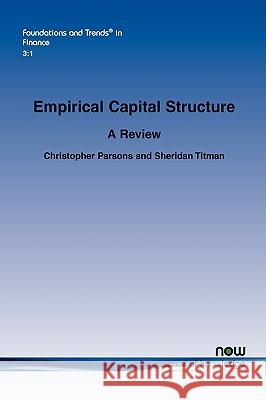Empirical Capital Structure: A Review » książka
Empirical Capital Structure: A Review
ISBN-13: 9781601982025 / Angielski / Miękka / 2009 / 108 str.
The firm's capital structure - how it funds operations by raising capital from a variety of sources -- has attracted considerable attention from both academics and practitioners. The empirical capital structure literature explores both the cross-sectional determinants of capital structure as well as time-series changes. Empirical Capital Structure reviews both aspects of this literature. Empirical Capital Structure is organized around a simple framework that contains three key ingredients: .the costs and benefits that determine a firm's capital structure .the existence of shocks that cause firms to deviate, at least temporarily, from their targets. .the presence of factors that may prevent firms from constantly maintaining debt ratios that match their targets. Empirical Capital Structure is organized as follows. Section II discusses specification and econometric issues that will be important for many of the tests considered. Section III reviews cross-sectional capital structure determinants. Section IV explores factors that pull firms away from their leverage targets. Section V discusses reasons why firms might not immediately reverse the effect of these leverage shocks, apparently allowing deviations from their targets to persist for extended periods of time. Section VI explores a group of studies that look at how leverage feeds back into a firm's real business decisions. Finally, Section VII concludes and provides suggestions for new research."












